A Rare And Unusual 19th-Century Carriage Clock
Signed Devienne Lamy A St Quentin, circa: 1860
SOLD
Request Information
Follow Us
A Rare And Unusual 19th-Century Carriage Clock Signed Devienne Lamy A St Quentin, circa: 1860
The gorge case has bevelled glass panels on all sides so that the movement is entirely visible and is surmounted by a shaped carrying handle. The white enamel dial has a Roman chapter ring with quarter-hour, five-minute and minute divisions.
The time is indicated by a pair of blued-steel Breguet hands. The spring-driven, eight-day movement is constructed between plates. It consists of going and striking trains, as well as alarm. The going train has English lever escapement with hairspring balance on a silvered platform. It can be adjusted by a regulator pin which can be seen through the window in the top and is accessible through the back door. The most unusual rack striking train indicates the hours fully on the hour and the half hour by two double strokes on two gongs, followed by the hours in full (demie grande sonnerie). There is a lever in the bottom of the clock to set the striking for SILENT or STRIKING. In addition, there is a repeat button on the top front side, with which the hour last struck as well as the quarter hours can be repeated at all times.
Features
Eight-day movement
Original silvered platform escapement
Repeat button
Strike/silent function in the bottom
Glazed all around
Attribution
SIGNED DEVIENNE LAMY A ST QUENTIN
Condition
Superb original condition throughout
Provenance
Private Belgium collection
Literature
Dimensions
PREVIOUSLY SOLD
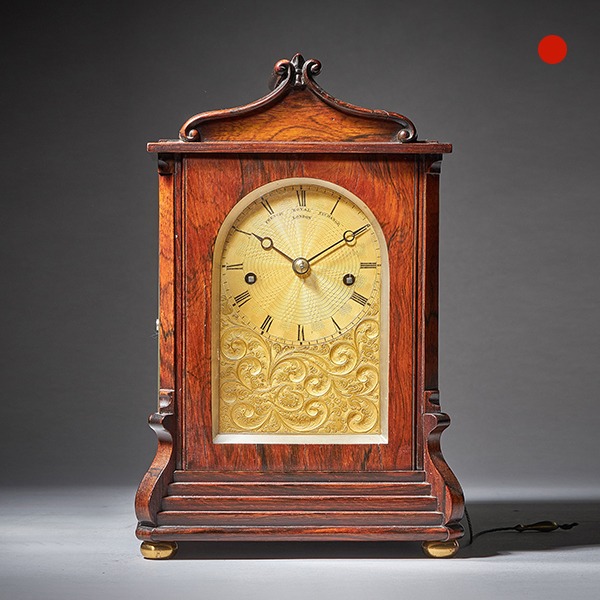
Striking George IV Eight-Day Rosewood Pagoda Library Clock by French, London
Striking George IV Eight-Day Rosewood Pagoda Library Clock by French, London Sold Follow UsStriking George IV Eight-Day Rosewood Pagoda Library Clock by French, London This lovely small library clock has a spring-driven eight-day twin...

18th Century George III Mahogany Quarter Striking Automation Bracket Clock By Stephen Rimbault
18th Century George III Mahogany Quarter Striking Automation Bracket Clock by Stephen Rimbault SoldFollow Us18th Century George III Mahogany Quarter Striking Automation Bracket Clock by Stephen Rimbault By Stephen Rimbault The impressive...
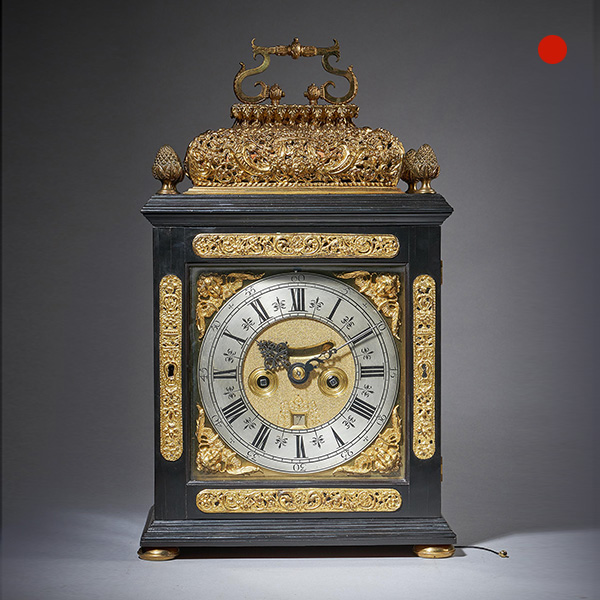
17th century William and Mary Ebony Eight-Day table clock by James Markwick
17th century William and Mary Ebony Eight-Day table clock by James Markwick Sold Follow Us17th century William and Mary Ebony Eight-Day table clock by James Markwick The elegantly proportioned ebony-veneered basket top case has fine cast...
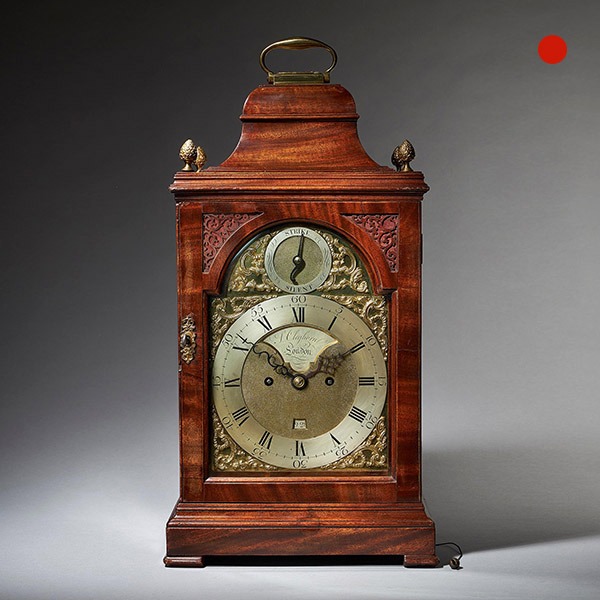
A Fine 18th Century Mahogany Eight Day Table Clock with Trip Quarter Repeat
A Fine 18th Century Mahogany Eight Day Table Clock with Trip Quarter Repeat SoldFollow UsA Fine 18th Century Mahogany Eight Day Table Clock with Trip Quarter Repeat An eighteenth-century English spring-driven mahogany table clock, signed on...
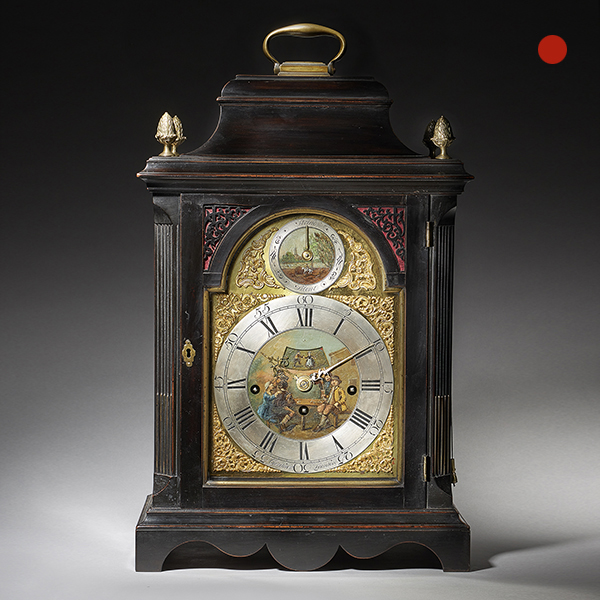
Extremely Rare George III 18th Century Quarter-Striking Bracket Clock
Extremely Rare George III 18th Century Quarter-Striking Bracket Clock SoldFollow UsExtremely Rare George III 18th Century Quarter-Striking Bracket Clock An extremely rare George III 18th century ebonized quarter-striking bracket clock by...
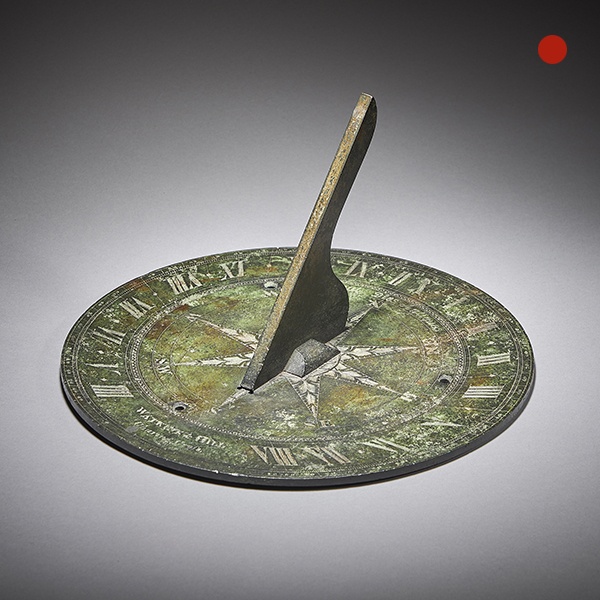
Rare 19th Century Bronze Horizontal Sundial by Watkins & Hill London
Rare 19th Century Bronze Horizontal Sundial by Watkins & Hill London £2,600 Follow UsRare 19th Century Bronze Horizontal Sundial by Watkins & Hill London A beautifully weathered circular bronze sundial by Watkins & Hill, first...

Striking George IV Eight-Day Rosewood Pagoda Library Clock by French, London
Striking George IV Eight-Day Rosewood Pagoda Library Clock by French, London Sold Follow UsStriking George IV Eight-Day Rosewood Pagoda Library Clock by French, London This lovely small library clock has a spring-driven eight-day twin...

18th Century George III Mahogany Quarter Striking Automation Bracket Clock By Stephen Rimbault
18th Century George III Mahogany Quarter Striking Automation Bracket Clock by Stephen Rimbault SoldFollow Us18th Century George III Mahogany Quarter Striking Automation Bracket Clock by Stephen Rimbault By Stephen Rimbault The impressive...

17th century William and Mary Ebony Eight-Day table clock by James Markwick
17th century William and Mary Ebony Eight-Day table clock by James Markwick Sold Follow Us17th century William and Mary Ebony Eight-Day table clock by James Markwick The elegantly proportioned ebony-veneered basket top case has fine cast...

A Fine 18th Century Mahogany Eight Day Table Clock with Trip Quarter Repeat
A Fine 18th Century Mahogany Eight Day Table Clock with Trip Quarter Repeat SoldFollow UsA Fine 18th Century Mahogany Eight Day Table Clock with Trip Quarter Repeat An eighteenth-century English spring-driven mahogany table clock, signed on...

Extremely Rare George III 18th Century Quarter-Striking Bracket Clock
Extremely Rare George III 18th Century Quarter-Striking Bracket Clock SoldFollow UsExtremely Rare George III 18th Century Quarter-Striking Bracket Clock An extremely rare George III 18th century ebonized quarter-striking bracket clock by...

Rare 19th Century Bronze Horizontal Sundial by Watkins & Hill London
Rare 19th Century Bronze Horizontal Sundial by Watkins & Hill London £2,600 Follow UsRare 19th Century Bronze Horizontal Sundial by Watkins & Hill London A beautifully weathered circular bronze sundial by Watkins & Hill, first...
YOU MAY ALSO LIKE
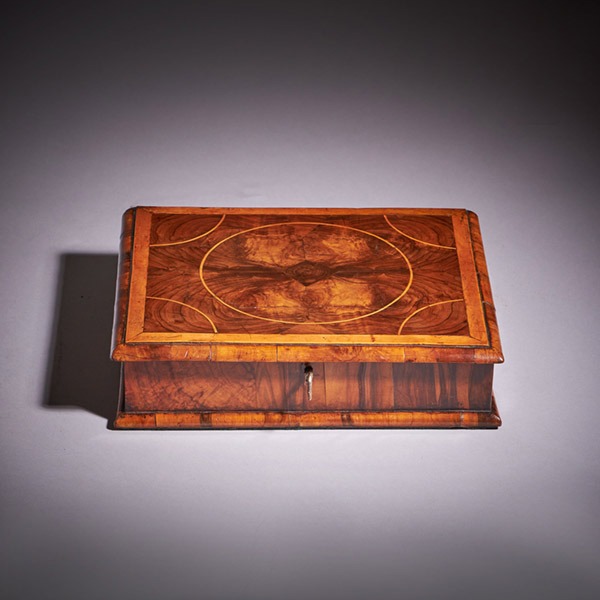
Fine William and Mary 17th Century Olive Oyster Lace Box
Fine William and Mary 17th Century Olive Oyster Lace Box £2,600Follow UsFine William and Mary 17th...
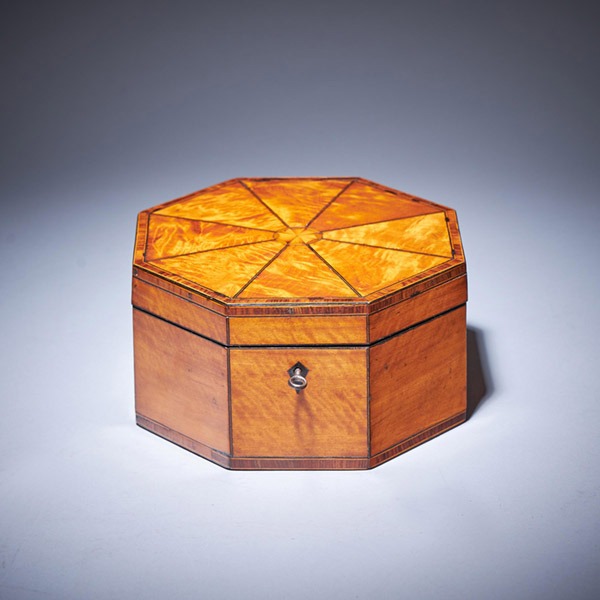
A Fine and Rare George III Octagonal Figured Satinwood Box, C.1790
A Fine and Rare George III Octagonal Figured Satinwood Box, C.1790 £2,200Follow UsA Fine and Rare...

A Rare and Vibrant Framed 18th Century George II Needlework Picture, Circa 1730
A Rare and Vibrant Framed 18th Century George II Needlework Picture, Circa 1730 £16,000Follow UsA Rare and Vibrant Framed 18th Century George II Needlework Picture, Circa 1730 A rare and vibrant early 18th century George II pictorial...
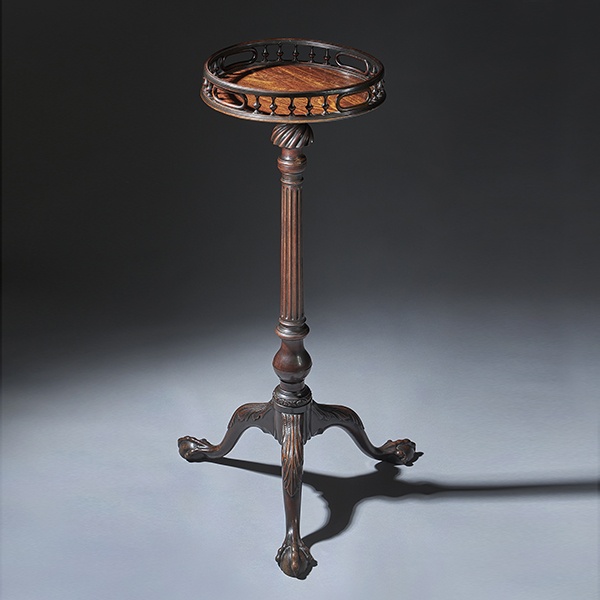
A Fine George II 18Th Century Chippendale Period Carved Mahogany Torchiere. Circa 1755-1765, England
A FINE GEORGE II 18TH CENTURY CHIPPENDALE PERIOD CARVED MAHOGANY TORCHIERE Circa 1755-1765, England £25,000Follow UsA FINE GEORGE II 18TH CENTURY CHIPPENDALE PERIOD CARVED MAHOGANY TORCHIERE, Circa 1755-1765, England An exquisitely fine and...
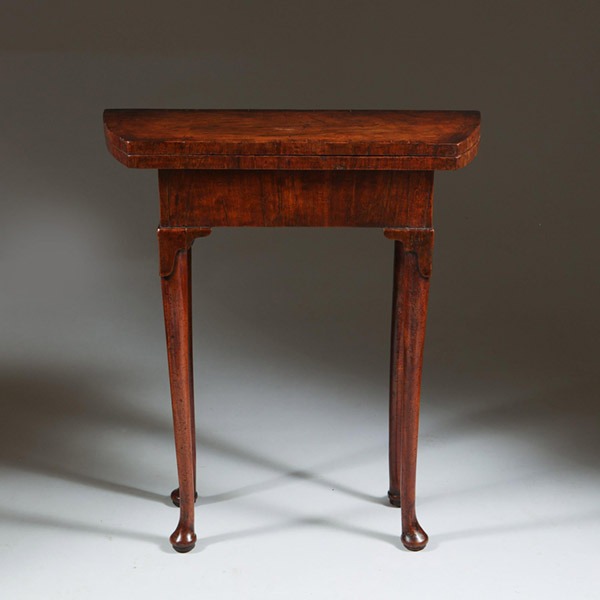
A Unique Early 18th Century Diminutive George I Figured Walnut Bachelors Table
A Unique Early 18th Century Diminutive George I Figured Walnut Bachelors Table £12,800Follow UsA...
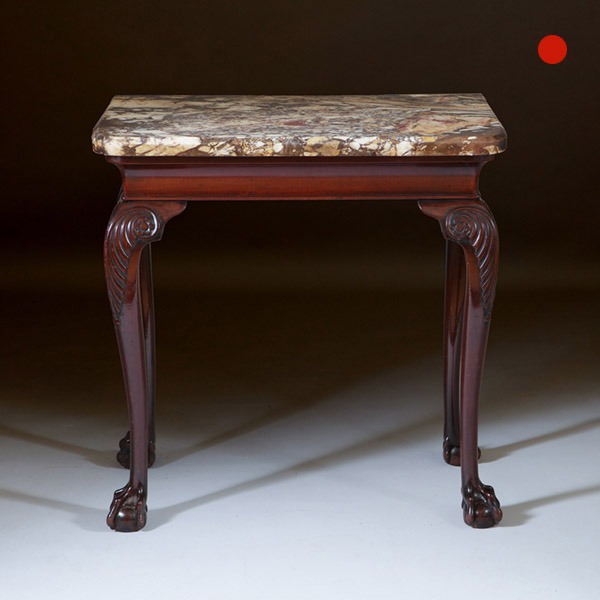
A Fine 18th Century George II Mahogany Marble Topped Console Table, Ireland
A Fine 18th Century George II Mahogany Marble Topped Console Table, Ireland SoldFollow UsA Fine...
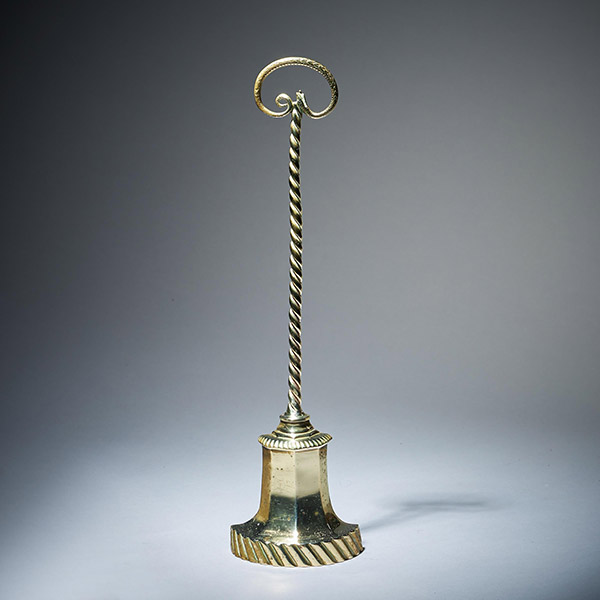
Early 19th Century High Regency Brass Snake Doorstop
Early 19th Century High Regency Brass Snake Doorstop £1,100Follow UsEarly 19th Century High Regency Brass Snake Doorstop A high Regency solid brass bell-shaped doorstop with snake handle, from the reign of George IV, Circa 1770. England The...
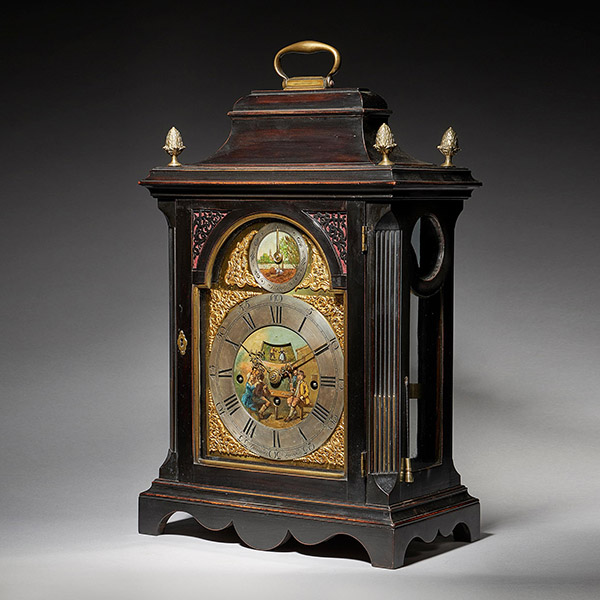
Extremely Rare George III 18th Century Quarter-Striking Bracket Clock, Signed
Extremely Rare George III 18th Century Quarter-Striking Bracket Clock, Signed Follow UsExtremely Rare George III 18th Century Quarter-Striking Bracket Clock, Signed An extremely rare George III 18th century ebonized quarter-striking bracket...
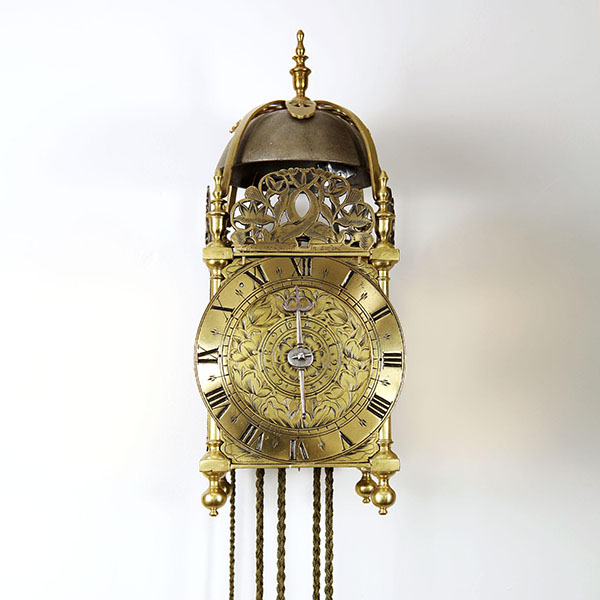
17th Century Lantern Alarm Clock by Johannes Quelch, Oxford
17th Century Lantern Alarm Clock by Johannes Quelch, Oxford £14,000Follow Us17th Century Lantern Alarm Clock by Johannes Quelch, Oxford An English 17th century lantern clock made of brass and iron, circa 1665-1670. The clock consists of going...

19th-Century Flame Mahogany Mantel Clock by BREGUET Raised by Lion Paw Feet
19th-Century Flame Mahogany Mantel Clock by BREGUET Raised by Lion Paw Feet £23,500Follow Us19th-Century Flame Mahogany Mantel Clock by BREGUET Raised by Lion Paw Feet EXTREMELY RARE MANTEL CLOCK WITH A FIGURED MAHOGANY-VENEERED CASE by A-L...

Unusual Ribbed Eight-Day Repeating Striking Gilt-Brass Gorge Case Carriage Clock
Unusual Ribbed Eight-Day Repeating Striking Gilt-Brass Gorge Case Carriage Clock £4,850Follow UsUnusual Ribbed Eight-Day Repeating Striking Gilt-Brass Gorge Case Carriage Clock CaseThe clock has a gilt-brass case which is a variation on the...

17th Century William and Mary Olive Oyster Lace Box, Circa 1680-1700
17th Century William and Mary Olive Oyster Lace Box, Circa 1680-1700 £3,900Follow Us17th Century William and Mary Olive Oyster Lace Box, Circa 1680-1700 A fine and rare 17th-century William and Mary period olive oyster lace box of perfect...









